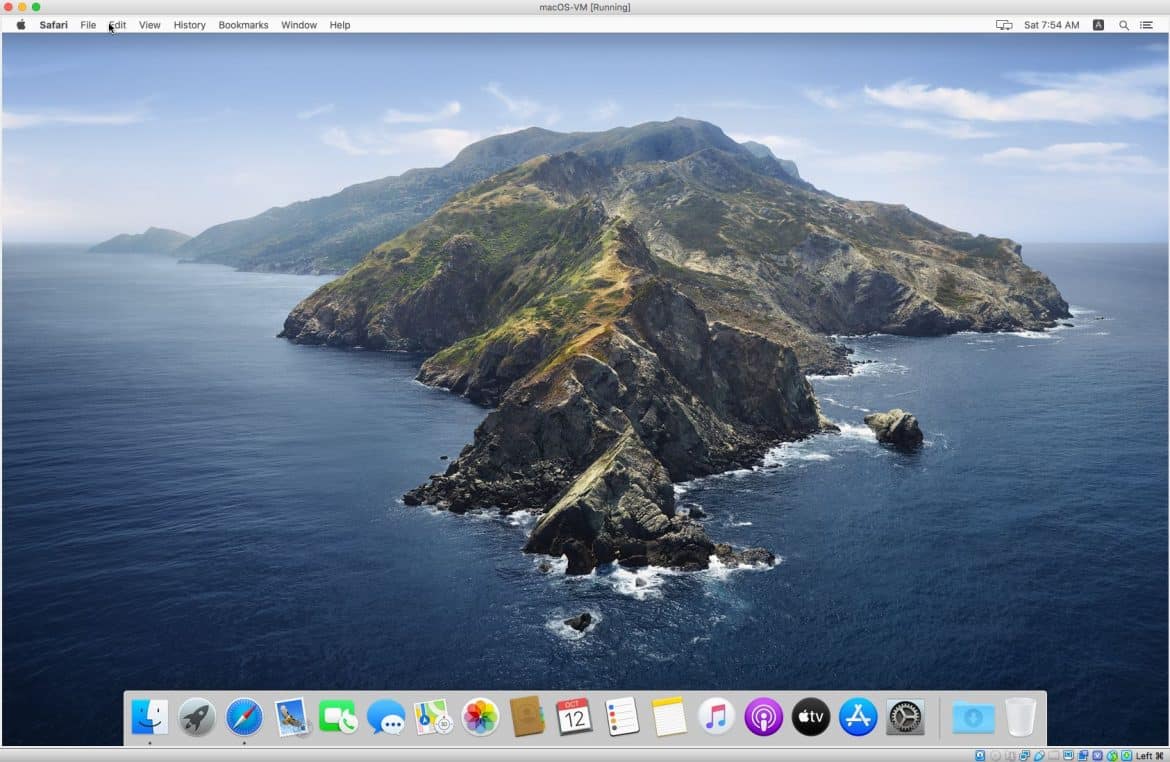- Download Macos Catalina Virtualbox Boot Image
- Macos Catalina Iso Virtualbox
- Macos Catalina 10.15.5 Virtualbox
- Catalina Mac Os Virtualbox
- Macos Catalina Virtualbox Installation Failed
Catalina-guest-install.log (5.8 KB) - added by Kalak 18 months ago. Install.log from a guest additions install on macOS 10.15 Catalina macOS-10-07-17-24-21.log (286.6 KB) - added by Kalak 18 months ago. Machine log from macOS host.
I am running VirtualBox version 6.0.8 r130520 (Qt5.6.3) with the 6.08 extension pack on a mac mini host with a Mojave 10.14.5 operating system.Install macOS Catalina on VirtualBox on Windows PC New Method One of the VirtualBox benefits is that it supports installing macOS officially without installing patches like VMware Workstation.It also accepts installing VirtualBox extension and installing VirtualBox Guest Tool, which makes running virtual machines perfectly nice. Anyway, I can guarantee that I'm running VirtualBox 6.0.10 on an up-to-date macOS host (an iMac running Mojave 10.14.6). Inside the Catalina Beta 6 VM I can left-click, right-click, but whenever I try to click and hold to drag something, it doesn't work. I've tried with a classical USB mouse, and the Apple trackpad I have with my iMac.
I cloned a Mojave VirtualBox image and performed a certain OS upgrade on that guest. The upgrade succeeded and the system boots and runs, except for one problem which suggests an issue with the VirtualBox USB pointing devices when used with some newer macOS kernels. Mouse drags do not work. (Simple clicks and double-clicks do work, however.) Click-dragging in the title bar of a window moves the window about 5 pixels only. Scrollbars cannot be dragged. Tests indicate that a mouse button release event is being generated as soon as the mouse is moved even though the button is, in fact, still pressed. I have tried using both the 'USB Tablet' and the 'USB Multi-Touch Tablet' as the pointing device -- both devices behave the same. The host mini does not have a USB tablet, however. It uses an Apple USB keyboard and an Apple USB mouse (neither use bluetooth).
I am able to move windows if I enable mouse-keys and use the keypad to generate mouse events. However, after enabling mouse-keys with System Preferences I am no longer able to open the Accessibility preferences app to disable mouse-keys. I get the Apple 'spinning wheel of death' and have to force-quit System Preferences. It seems possible that this hang is somehow related to the USB tablet emulator, but I have no evidence to support that.
This document will provide instructions on getting a macOS Catalina install working with Guest Additions on VirtaulBox 6.1.
Download Macos Catalina Virtualbox Boot Image
Start by downloading a copy of the installer from the App Store. You will need a computer running macOS and you will need to convert the installer to an ISO. I will not be covering these steps here, but there are plenty tutorials online.
Installing VirtualBox
I’m hoping you already have this part covered and you are coming here only because you had issues getting macOS installed, but just in case, make sure the following packages are installed (Arch):
Creating the VM
Start by creating a new VM. Give it a name without spaces.
Give it enough memory so the install will run faster. We can change this later.
Select to create a new Virtual Hard Disk
Select VDI

Select fixed size
Give it a bare minimum of 25GB (I would advise on at least 50GB if you can spare the space)
Macos Catalina Iso Virtualbox
Edit the machine, go into «System => Motherboard» and disable floppy boot and change the chipset to PIIX3

In the processor give more CPU if you can spare
In «Display => Screen» increase the video memory to 128MB and enable 3D acceleration
Enable USB 3.0
Note: if you can’t see USB 3.0 you might need to add your user to the vboxusers group
Insert the install ISO
Additional Configuration
Now we need to run a few vboxmanage commands for additional settings. Either run the lines with vboxmanage from the script below (add your virtual machine name under $vm_name), or save the full script and run it.
Note: the default resolution is set to «1280x1024». You can change it in the last line of the update code. Make sure to keep it to “640x480, 800x600, 1280x1024, 1440x900, 1900x1200“
Installing macOS
We are now ready for the install. Start the machine and select you language.
Select disk utility.
Select the VirtualBox hard disk and click on erase.
Give it a name, select the same options and click on erase. Close the disk utility when done.

Click on install macOS.
Continue with the install as you would until you are presented with the desktop.
Note that the installer will reboot once in the middle of the install.
Installing Guest Additions
We now need to get Guest Additions installed. Remove the install ISO and mount the guest additions CD. Open it with finder and run the VBoxDarwinAdditions.pkg
Macos Catalina 10.15.5 Virtualbox
Install it as if you would install any other package.
You will most likely get an error message that the install has failed.
Close everything, unmount the guest additions CD and open a terminal window (Command+Space, type terminal).
Now we need to restart the VM in recovery mode. Type in:
Once it has rebooted into recovery mode, on the top click on «Utilities => Termminal»
Catalina Mac Os Virtualbox
Type in the code below. This is to sign Oracle software as authorized. Then we disable recovery mode and restart the VM.
Macos Catalina Virtualbox Installation Failed
When the VM has rebooted you should have guest additions working. Remember that not everything works, but the features below should:
- Copy/Paste
- ~Drag and Drop~ Reported as not working (see comments)
- VirtualBox Shared Folders
- Guest Control
